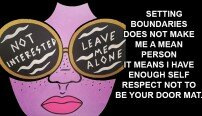 Caryn Franklin MBE is…where do I even start? Well, firstly one of the most inspirational women I have interviewed so far.
Caryn Franklin MBE is…where do I even start? Well, firstly one of the most inspirational women I have interviewed so far.
Former i-D Magazine fashion editor and co-editor (6 years) and BBC Broadcaster for the Clothes Show (12 years), Caryn certainly hasn’t been camera shy of the industry. Her interview list includes practically everyone from Yves Saint Laurent to Giorgio Armani and she has created televised tributes at the V&A for ITV featuring Vivienne Westwood and Philip Treacy. Ms Franklin has published four books, written for a host of national publications and has co-produced numerous fashion programmes for BBC 1, Channel 4, ITV, Discovery, Granada and UKTV Style.
An external assessor, course validator and lecturer in colleges including Central St Martins, London College of Fashion and Royal College of Art, Caryn has an Honorary Doctorate from Kingston University, is an Honorary Fellow at the Arts University College of Bournemouth, a Visiting Fellow at London College of Fashion and ambassador for the London College of Fashion’s Centre of Sustainability and for the Clothes Show Live – a brand she has worked with since its beginning 22 years ago.
For 17 years Caryn has co-chaired award-winning Fashion Targets Breast Cancer, and in 2009 co-founded the award-winning All Walks Beyond the Catwalk, promoting sustainable body and beauty ideals. This initiative has changed university curriculum’s and reached international institutions in Canada and Australia. Franklin helped create the Diversity Network at Edinburgh College of Art and the Body Confidence Awards at Parliament; in March 2013, she collected an MBE for services to Positive Body Image and Diversity in Fashion.
To date, Ms Franklin has worked with a plethora of mainstream retailers and brands including Platinum Guild, Royal Mint, Next, Debenhams, Arcadia, Coca Cola, Meryll Lynch, Wella, L’Oreal, Gov. Minister Jo Swinson’s Press Office, Graduate Fashion Week, National Portrait Gallery, Cambridge University, SHOWstudio and the V&A Museum.
Now do you see what I mean? I found her story so intriguing; I refused to edit it in case I missed out any of the good bits!
Growing up
I am the eldest of five and I spent a lot of time in the gym and used up all my energy doing training in gymnastics. As a teenager, I had a lot of anxiety and doubt about who I was and how I would fit in. I also had a lot of anger around seeing how unjustly women were treated in comparison to men; I could even see this in my own family. So I was a very lippy teenager, who often challenged my father, both of my parents would be surprised at my energy because I wanted to change things, but they did not discourage me. One of the things I loved was clothing, we didn’t have ‘fashion’ as such in those days or a high street, and we didn’t have any money. I would get packages of second hand clothes from relatives and I would customise them and make them work for me, this is how I got very good at sewing and making clothes. That is when I really realised the power of clothes to boost my self-esteem, I could imagine who I wanted to be and be that person using the clothes. I loved fashion for that reason! I never felt that I needed to change my body or that it was not good enough because I never compared myself to glamorous women in the media. Our media didn’t focus on women’s bodies like it does today. I was growing up at a very exciting time for young women because we had a lot of female scholars and activists who were complaining, changing and overthrowing the existing culture of objectification and sexualisation of women. They were saying to me as a young girl you don’t have to think about the way you look, what’s much more important is how clever you are, what your idea’s are, what you are going to do with your life and what you’re going to do to change things and make them better. People like Susie Orbach, Germaine Greer and politicians such as Golda Meir and Indira Gandhi, inspired me. In those days, we didn’t have the Internet and the male media didn’t really promote women as scholars and activists but they got through somehow and so I was seeing women who weren’t just having babies and that was very important for the young Caryn.
Ambitions and achievements
I knew I was creative so I went to Art College, I didn’t do a fashion media course because they weren’t invented in those days. I did a BA Honours Graphics course at Kingston and then a post graduate at Central Saint Martins and then I went to a magazine called i-D, it was the right environment for me because it was about personal identity.It wasn’t about what a lot of current fashion magazines are about,‘these are the rules’you’ve got to‘get the look’,work very hard to look like these ‘catwalk models’,you’ve got to care about‘trends’and attract boys.
When I began in fashion, it was more about having a political statement; it was about saying something about you, what you believed in and using your clothes to communicate this.[/highlight] We didn’t have social networking, so we wanted people to know all about us by what we were wearing. If we were walking down the street that was the only way you could make a connection with someone else and this is how you would find a way to start a conversation. During this time I was wearing clothes that I had customised and I had friends who were young designers so we all did self-styling, I didn’t take pointers from magazines about what I was supposed to look like, I just chose my own look. I shaved all my hair off and I wore my Vivienne Westwood Bondage trousers, knee high Doc Martens and lots of ripped up T-shirts. It was an anti-girly look, I didn’t want to be defined, and none of my generation were particularly interested in looking ‘sexy’, we wanted to get jobs in corporations, to rise to the top and be the CEO, we wanted to be taken seriously and for people to recognise that we had great ideas and contributions to make.
We didn’t wear body-con skimpy dresses, show lots of cleavage or wear short skirts with high heels. We wore what you call ‘power dressing’ such as men’s suits, jeans and brogues with my shirt buttoned right up to the top. This is how I lived my early career; I had many opportunities to travel with i-D magazine and to work with different fashion designers. Bodymap were one of the leading designers during my day and they had catwalk shows in which they had people of all different shapes and sizes including their mothers and aunties and I thought this is how fashion should be. I don’t like current catwalk fashion, showing an extremely thin, very young (usually white) woman. I recognise that when you only showcase one audio ideal that is unachievable it damages people’s self-esteem. When I left i-D, I went to work at the BBC on a television programme called The Clothes Show, we made a mainstream fashion programme that had a 13 million audience every Sunday. It also went out to a global audience of 157 million; this is when I began to really fight for showcasing a range of body types, ages and skin tones. I learnt you’ve got to be in it to win it, it’s no good stepping away from it and complaining loudly because you’re powerless.
When I left the BBC I chose to work in a very mainstream way, because I wanted to work with mainstream women, this is where I felt I could make the most difference to self-esteem. I worked on lots of different projects doing what you call ‘silent partner consultancy’and I did shows up and down the country on women who had different body shapes, this was all before the ‘digital age’, I wish now we had the ability to record all of that work. I wrote books on fashion and also a novel called ‘Woman In The Mirror’ which is about looking at why fashion made women feel unhappy with their bodies. I have been involved with Fashion Target’s Breast Cancer and I learnt a lot doing that, helping women understand that early presentation of a lump saves lives because most breasts lumps are non-malignant. Fashion Targets breast cancer is a fantastic campaign, which I have been doing for years and designers all over the place have made brilliant contributions. All Walks Beyond the Catwalk which I started in 2009 with Debra Bourne and Erin O’Connor was an extension in a way, the industry had become lazy and we wanted to challenge it. So All Walks Beyond the Catwalk is about challenging the fashion industries dependence on a very rigid and unachievable body ideal that doesn’t support most women and undermines their confidence.
’Bodymap were one of the leading designers during my day and they had catwalk shows in which they had people of all different shapes and sizes including their mothers and aunties and I thought this is how fashion should be. I don’t like current catwalk fashion, showing an extremely thin, very young (usually white) woman.’
Test and trials
In any project there will always be trials, sometimes you might just have that nagging doubt that tells you you’re not good enough and maybe somebody better should be working on it. However, if you care enough to put yourself in this position in the first place then you are the right person. I have always had doubts through my working life and I think that most creatives do, it shows you care, and that you are not arrogant. There is too much arrogance in much of our business world where there are certain people in positions of power who don’t question whether they have enough knowledge to make the decisions that they make. They are not humble enough and they go ahead and do things without thinking about the consequences or the impact it will have on people’s lives. Therefore, I think doubt is a good thing.I have been in situations where I have said I will make something happen and then realised how ambitious that was.
An example would be when I first began First Target Breast Cancer; I wanted to make a book happen called ‘Breast Health Handbook’ to teach anybody who read it everything they needed to know about breast health. There were lots of questions that people had so I wanted to launch it with the campaign. I wanted to include everything from ‘am I eating the right diet?’, because Western diet is very animal fat heavy and that can contribute to breast cancer along with stress, prescribed contraceptives and the hormones that our in our dairies. I wanted to be able to talk about all of that, plus what would happen if you found lumps and the treatment you would need to have to cut it out. I needed to contact an awful lot of experts and a publisher to get a book deal; I needed to do this in under six weeks. One of the things I would advise everybody is to try and share your work and bring other people into your team and ask ‘do you care about this as much as I do? Because we’ve got the opportunity to change this but I can’t do it on my own.’I did collaboration and shared my work with a brilliant women called Regina Goodman (a friend at the time) and she and I set about working with Professor Barry Gusterson who advised us about the right people to speak to. We began contacting scientists, doctors and experts asking them to each write us a chapter. This was in the day before email, so they wrote it using a typewriter and then we had to type it all in to make a manuscript (all in six weeks). People had to send us their information by post (no emails), so we stayed up night after night and we got more and more tired but we made it happen and it became a best seller.
There were times when I was really, anxious that I wouldn’t make it happen but you just have to approach these situations methodically. Each day you do a bit more and then a bit more and keep on going. This is how I have always approached my projects, when we launched All Walks Beyond The Catwalk, we didn’t have any money, we were trying to create a big event at London Fashion Week and everybody had to contribute for nothing – but passion is infectious and people buy it! I have done things which are scary, but it’s important to scare yourself! I did a project where I went to Bosnia when there was a war on and I was delivering clothes for teenagers.. We had to drive through the mountains with our lights off at night to avoid snipers and I was very tearful at that time because I thought ‘I’m just a fashion reporter, who is out of my depth here.’ I was more worried about the lorry accidentally driving over a cliff than the snipers.
The future
I am acting right now in order to change the future by lecturing in colleges and universities up and down the country. I have also been lecturing abroad in Toronto as well as other colleges outside the UK to help publicise the next generation of fashion designers. I want to teach them that they have a responsibility to understand the impact of their fashion messaging and question the industry about why it promotes such unachievable body ideals and how this is helping young women and men. I hope that they come out of college in a few year’s time being able to change things by saying to their employers, ‘that’s boring, why are we always using thin white women? Let’s make sure that we have different skin tones on our catwalks of different sizes and ages.’ Beauty ages beautifully so we should be able to see a variation.
I spend about 70% of my time working with All Walks and it’s voluntary, so I leave myself a little bit of time to work very hard and fast to pay my bills! In the future, I look forward to learning more, from September I will be a student at London College Of Fashion, I am going to study a Masters in Applied Phycology in Fashion, I want to learn more about the scientific language. Business does not feel in self-esteem, confidence, or female instinct; it only deals in profit and hard and fast facts, so Science might be a language I can use to change business. A great example of this is the Debenhams Look book I did, I used a variety of body ideals, all of those changes were very positive for consumers, and so I want Debenhams to take them further and keep on using them.
(Cover image: Chris Floyd / Featured image: Nick Knight)











